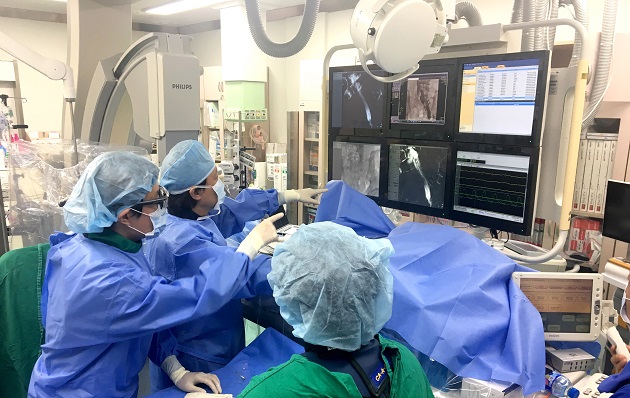Doctors at Korea University Hospital's department of cardiology completed a stent insertion with an angiogram that used carbon dioxide instead of a contrast agent, the hospital said Friday.

The team led by Professors Yu Cheol-woong, Jeong Han-saem, and Jang Duck-hyun operated on a patient with May-Thurner syndrome who experienced an anaphylactic shock to a contrast agent-based angiogram.
"Carbon dioxide-based angiography can be a useful treatment for patients with contrast-medication side effects or chronic kidney disease patients at high risk for kidney failure," Professor Yu said.
May-Thurner syndrome, also known as the iliac vein compression syndrome, is characterized by vein compression that may cause discomfort, swelling, pain or blood clots (also called deep venous thrombosis) in the iliofemoral veins.
Stent implantation is performed in the iliac vein for patients with May-Thurner syndrome to prevent recurrence. Angiograms using contrast agents are needed to insert the stent into the patient.
However, contrast agents can cause side effects such as urticaria, itching, vomiting, nausea, and rash depending on the individual. In extreme cases, contrast mediums could lead to kidney failure, hypersensitivity shock, cardiac arrest, and death.
Physicians at Korea University said they could not insert a stent into the patient using a contrast agent-based angiogram because the patient got an anaphylactic shock in response to the contrast medium, the hospital said.
The patient had a pulmonary embolism that was caused by venous thrombosis of the left leg due to May-Thurner syndrome, the hospital said.
The professors, therefore, opted for a carbon-dioxide based angiography to minimize side effects and executed it successfully.

